The venerable Toyota Prius hybrid is generally accepted as the car which changed consumer’s attitude toward hybrid-electric drivetrains.
While the Prius wasn’t the very first hybrid to be sold in the U.S. (the original Honda Insight beat it by a few months), it has proven by far the most popular to date.
And with more 1 million Prii sold since it launched in the U.S. 11 years ago, the Toyota Prius is now a regular on used car lots and websites across the U.S.
To help you, we’re covering the basics first and then dealing in-depth with each vehicle on its own page.
Follow the links to navigate among the different models.
How it works
All Prius models are powered by Toyota’s hybrid drivetrain, consisting of a gasoline engine and a pair of electric motors delivering power to the wheels through a planetary gearbox.
Also see: Used Toyota Prius listings
Effectively a computer-controlled continuously-variable transmission (CVT) the Prius on-board computer determines if the car will be powered by the gasoline engine, the electric motor, or a combination of both.
In low power-demand situations, the CVT can send excess power from the car’s engine to the on-board hybrid battery pack by turning one of the motors into a generator.
Gentle braking or deceleration also sends power from the wheels through the CVT to the battery pack by turning one or both motors into generators.
Due to the way the CVT works, sometimes the engine speed of the Prius does not match the speed of the car.
Disconcerting to many first-time Prius drivers, it doesn’t take long to get used to and is caused by the car’s on-board computer running the engine at its most efficient speed for the power demand at the time--making up the difference with electric torque
Support, service
All three generations of the Toyota Prius are still well supported by both official Toyota garages and a number of independent garages.
Some of the independent garages -- including Carolyn Coquilette's Luscious Garage in San Francisco -- offer upgrade services, including turning your standard Prius into a Plug-in Hybrid that can drive from 10 to 50 miles on all-electric power (depending on which conversion you choose).
However, with Toyota not officially supporting such upgrades, you should examine the consequences of upgrading your car before you commit to such an upgrade.
There’s also a very lively owners’ community, with regional Prius owner’s clubs in most major U.S. cities and many online forums dedicated to the brand.
The battery question
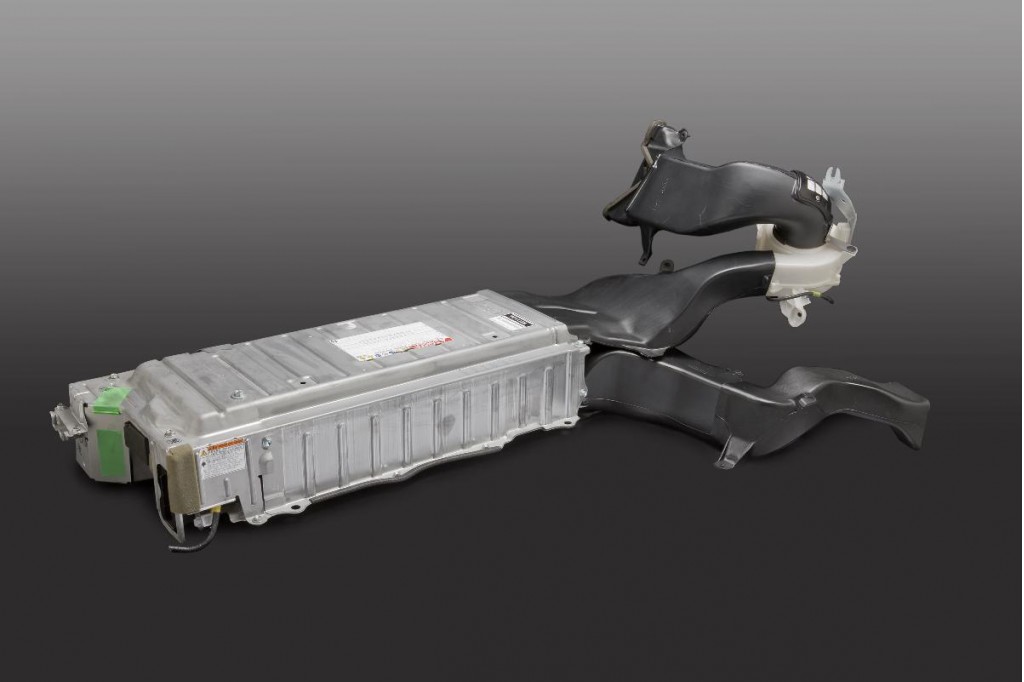
2004-2009 Toyota Prius battery pack, second generation
For many years, horror stories and urban myths have claimed that the Toyota Prius battery pack will only last a few years before it needs a replacement, at huge cost.
In general, this isn’t the case -- many Prius models are still functioning with hundreds of thousands of miles on the clock.
Prii younger than 8 years old with under 100,000 miles on the odometer (10 years and 150,000 miles in CA) are covered under Toyota’s original battery warranty.
If you’re worried about the worst-case (and unlikely) scenario, in which you’ll need to read a new battery, we recommend you read our Ultimate Guide to the Toyota Prius Battery Life, Cost and Warranty.
Basic buying advice
Like any other car, we recommend you consider buying a Toyota Prius from a known, reputable dealer.
Also, check that any applicable recalls have been carried out on the car you’re looking to buy. All models of Prius have been involved in various recalls over the years, so make sure you check the National Highway Traffic Safety Administration (NHTSA) database and Toyota’s own database to make sure your car doesn’t have any outstanding recalls.
Before driving, sit in the driver’s seat and turn the car on. After a few seconds, the engine should turn on and run without any driver input -- before turning itself off after between 30 seconds and a minute.
If the engine continues to run while stationary, races, or you see a battery, engine or turtle error light on the dash, you should get a thorough mechanical inspection before going further.
When driving, make sure you put the car through a variety of road conditions to test acceleration, braking, and handling, remembering that there is normally a slight delay between pressing the accelerator hard and the car responding.
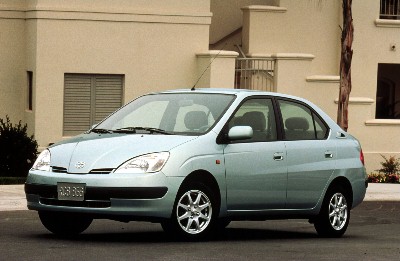
2000 Toyota Prius
First generation: 2000-2003
While the Toyota Prius was launched in Japan in 1997, the U.S. market didn’t get the car until the year 2000. Marketed between the Toyota Echo and Toyota Corolla, the original Prius was a four-door sedan offering a column gear selection and five seats.
Due to the large traction battery located directly behind the rear seats, luggage space in the original Prius is smaller than the space found in similar-sized sedans.
The first Toyota Prius models featured a small multifunction display, which displayed information about the car’s current and past fuel consumption.
With air conditioning as standard, the original Prius was only offered in one engine specification, although it did feature an extras list - including satellite navigation and the usual trim and accessory lists found with any car.
Missing from that list however, was a tow-bar.
As with all Toyota Prii, towing with the 2000-2003 Prius is not officially sanctioned by Toyota and may -- in certain circumstances -- affect any warranty claims if (and only if) it can be proven that the tow-bar caused the fault which is being claimed for under warranty.
It is possible to fit an aftermarket tow-bar to the 2000-2003 Prius, although it will affect both the car’s handling and fuel efficiency. We’d have to advise against it, unless you absolutely have to tow something like a camping trailer, for example.
Plug-in?
It is possible to convert an original Toyota Prius to a plug-in hybrid, but given the price of conversion and the age of any original Toyota Prius, we’d advise against converting the 2000-2003 Prius into a plug-in hybrid.

Toyota Prius Eco-Mission 99
Batteries?
As the oldest Prius, the Prius sedans are the most likely to undergo battery failures. However, battery failures are still relatively rare.
Even if a battery dies, the car needn’t, with batteries still available through Toyota and a number of independent garages and salvage yards.
Economy?
Featuring a 1.5 liter engine producing 70 horsepower and an electric motor capable of a peak power output of 33 kilowatts, the original Prius has an official EPA approved rating of 42 mpg for city driving, and 41 mpg for highway driving.
Earlier this year, Consumer Reports took a 2002 Toyota Prius with 206,000 miles on the odometer and put it through the same tests it ran on a new Toyota Prius in 2006.
Nine years on, the car had dropped just 0.2 mpg in fuel economy, and took 0.3 seconds extra to reach 60 mph.
In other words, 9 years and 206,000 miles on, a well-maintained Prius was still as economical as the day it was driven off the dealer lot.
2008 Toyota Prius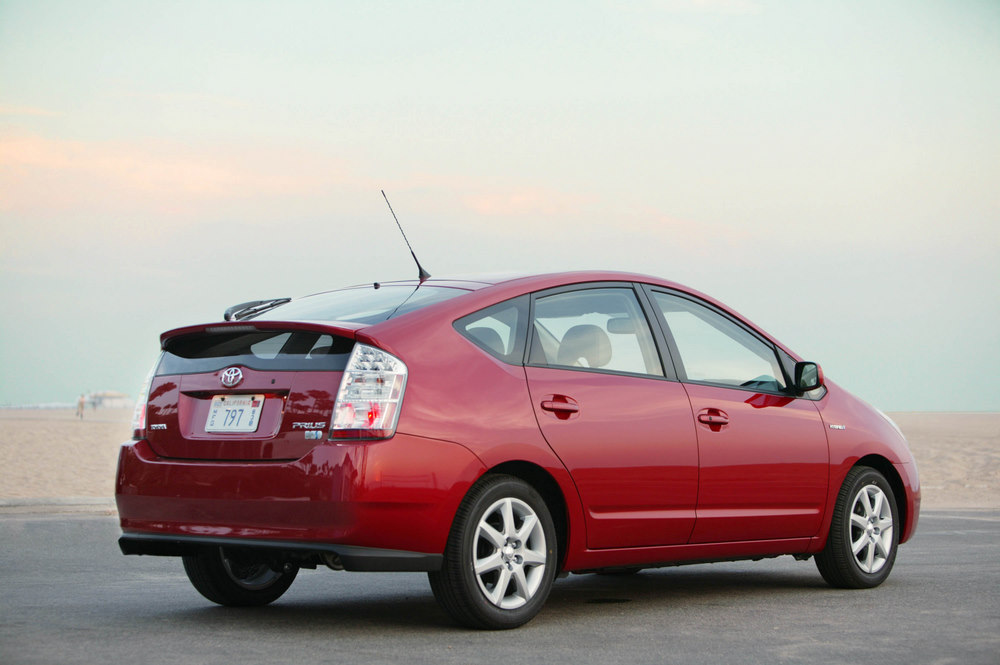
- The Basics
- Toyota Prius (NWH11) - 2000-2003
- Toyota Prius (NWH20) - 2004-2009
- Toyota Prius (NWH30)-2010-present
For the 2004 model year, the Prius received a complete facelift, losing its small sedan body and becoming a mid-size hatchback, capable of comfortably seating five moderately-sized adults.
Replacing the original battery pack with a smaller and lighter unit, Toyota engineers were able to move the battery pack under the very rear of the Prius’ load bay giving it a much larger and more practical load bay.
As a hatchback, the 2004-2009 Prius has a much more practical load-carrying ability, being able to carry very large objects with the rear 60/40 seats down.
As with the original Prius, the electrically-assisted power steering in the 2004-2009 Prius is extremely light. Designed for the Japanese domestic market -- where steering is generally much lighter -- it may take a while to get used to the rather sensitive steering.
This also has an effect on the feedback to the driver, with very little road vibration transmitted to the wheel.
The Column gear selector was replaced by an on-dash gear selector, and the dash redesigned to include a much larger multi-function display.
The 2004-2009 Prius was the first to feature the ability to operate entirely in electric-only mode, thanks to an EV-button which forced the car to use just its battery pack to power the car.
However, this feature was not offered in the U.S. market cars, despite the wiring existing to enable the feature. As a consequence, some U.S. Prii have had this feature enabled using a D.I.Y. modification.
Just like its predecesor, it is possible to fit a tow-bar -- but it is an unspported and unsanctioned modification. If you really need to tow a lot, we'd suggest buying another car.
Gadgets Galore
The 2004-2009 Prius featured a plethora of gadget-savvy features, with voice-activated climate control and satellite navigation, Bluetooth connectivity and rear-view cameras all offered as options.
Included as standard on later cars was a 3.5 mm audio input jack, and MP3 CD auto-changer, keeping both driver and passengers musically entertained on longer trips.
Information about the car’s fuel economy was conveyed through a larger multifunction touch-screen display centrally mounted in the dash.
With the addition of aftermarket accessories, it is possible to turn this display into an entertainment system, playing video from an iPod, iPhone or portable computer to keep passengers entertained on long journeys.
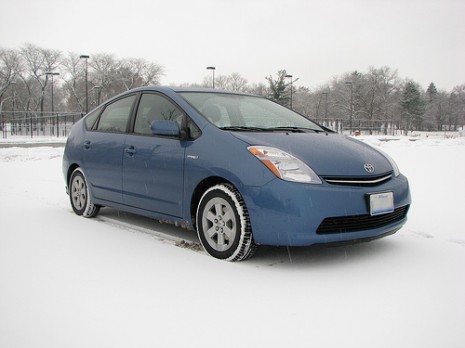
Toyota Prius in the snow
Plug-in?
The 2004-2009 Toyota Prius was the base for the first homebrew Plug-in Prius modifications, although it wasn’t an officially sanctioned Toyota update.
With many different aftermarket kits and conversion options available, the 2004-2009 Prius is the most commonly converted Prius. However, with conversions costing a lot of money, you need to think long and hard about investing in converting an older car.
Converting the 2004-2009 Prius to a plug-in hybrid can be expensive if you opt for a garage-installed conversion. It can also void your insurance in the event of a loss, make the car heavier, and also reduce luggage space.
We’ve actually converted a 2005 Prius to a Plug-in hybrid and achieved over 1000 miles on a single tank of gasoline. However, it isn’t easy -- and, as we found out when our converted car caught fire, it comes with its own set of risks.
Given the number of factory-original plug-in cars that will be coming to market over the next few years, we’d advise not converting a Prius to a Plug-in Hybrid at this time.
Batteries?
With 2004-2009 Prii being much newer than the first generation cars, most are still happily driving on their original battery packs.
With a smaller, lighter battery pack, the second generation Prius battery pack has a much longer life. As with any car, provided it is looked after and regularly serviced, we don’t expect many Prii of this age to need new batteries.
As with the older cars, replacements are readily available if the worst happens, however.
Economy
With a more aerodynamic design, a more powerful 76-hp, 1.5 liter engine and a 50-kilowatt electric motor, the 2004-2009 Prius is more fuel efficient than its predecessor.
In official EPA tests, the 2004-2009 Toyota Prius gained a rating of 48 mpg for city driving and 45 mpg for highway driving.
Much like the previous generation car, Consumer Reports took a 2004 Toyota Prius with 215,000 miles on the clock and tested it for fuel economy and acceleration against its official ratings back in 2004.
The result? The car had dropped a mere 2 mpg, and gained a 0.8 seconds in the 0-60 mph dash.
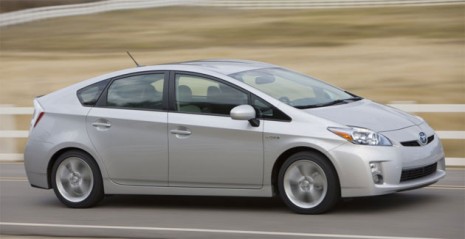
2010 Toyota Prius
Third generation: 2010-Present
The 2010-onwards Prius has been the most mainstream -- and the most fuel efficient -- of Toyota’s Prius models.
With a similar shape and style to the 2004-2009 Prius hatchback, the 2010-present Prius will be familiar to anyone who has driven the earlier model.
With a similar battery pack to the 2004-2009 Prius, the newer model has a similar shaped and sized load bay.
Internally, the dashboard is more conventional, with information about the car’s fuel economy separated from the multi-function display on a dedicated screen next to the speedometer.
Climate control also has its own screen and buttons, giving the interior of the current Prius a busier look than its predecessor.
Inheriting the flying-buttress style console from other Toyotas, the new dashboard extends towards the center arm-rest -- giving the gear selector a more conventional home within easy reach of the arm rest.
Just like its predecessor, the current Prius is heavy on gadgetry. We like the hands-free connectivity and wireless Bluetooth streaming to the stereo system, as well as the optional rear backup camera. Some models even feature self-parking.
But perhaps the most important revision in the current Prius is its improved ride and handling characteristics over the previous version. Steering weight is more appropriate to U.S. tastes, and there’s less body roll thanks to a redesigned chassis and larger wheels.
Unlike the previous Prii, the current version also features a choice of operating modes, including the all-electric “EV” button. This allows the car to be run entirely on battery power alone for up to a mile at city speeds before the gasoline engine needs to kick in.
In “ECO” mode, the Prius’ throttle response is tamed, encouraging smooth and gradual acceleration, and is the standard operational mode when the car is turned on.
Switching to “Power” mode drops fuel efficiency, but increases performance by using both gasoline and electric power together as much as possible.
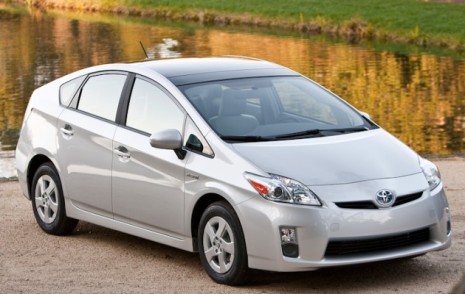
The 2010 Toyota Prius
Plug-ins and batteries
Given that the 2010-current Prius is so new -- and therefore most likely within its 100,000 mile warranty period -- we’d advise against an expensive plug-in modification.
Next year, Toyota will launch its own, purpose-built 2012 Toyota Prius Plug-in Hybrid. It may take a few years to reach the used market, but we’d advise anyone with enough money to consider buying a used 2010 or newer Prius to hold off on making a purchase, if they really must have that plug-in functionality.
As for batteries? With the cars so new, we really hope that failing batteries isn’t a problem for many years to come.
Economy
With a larger 1.8-liter engine producing 96 hp and a smaller but more efficient electric motor, the current Prius is EPA-rated at 51 mpg in the city and 48 mpg on the highway, making it the single most efficient non-plug-in car on the market.
Because it’s so new, we can’t comment on how fuel economy will fare with time, but we can expect that it will hold up to time in much the same was as the Prii before it.
For a more in-depth look at the latest Prius from Toyota, don’t forget to check out our extensive review of this third-generation hybrid.
In conclusion
Whatever its age, the Toyota Prius brand represents a reliable and cost-effective way to use as little gasoline as possible. If your primary concern is fuel economy, you’ll find any of the three models acceptable -- with the highest fuel economy coming from the latest model.
The most current Prius gives the best performance and driving experience, but given you can choose from among five model years, our pick for best used Prius value has to be the second generation (2004-2009).
Versatile, reasonably new, but without major depreciation woes, we think it represents an ideal green car for someone looking for a used car.
+++++++++++













